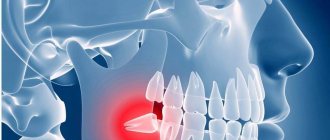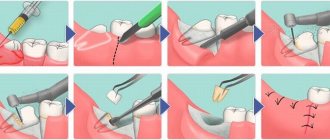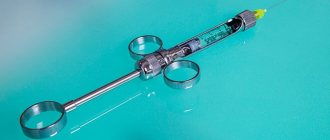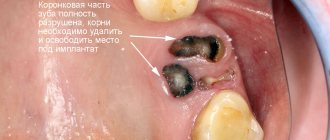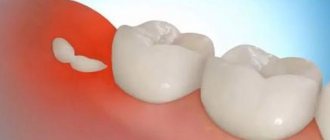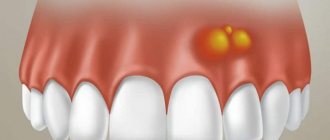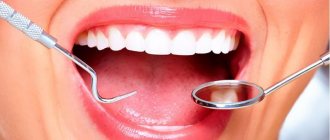Tooth extraction in dentistry is divided into simple and complex. When extracting a tooth with one root, such manipulation is considered simple. If the tooth has a complex root with several branches, then the procedure for removing it will be complex and is carried out using special tools and techniques.
In what cases is dental surgery difficult?
Complex manipulations regarding tooth extraction include the following situations:
- with disconnected roots that are excessively curved inward or directed in different directions;
- when the problem tooth is located in the affected bone;
- in the complete absence of a crown, when there is nothing to grab onto with forceps;
- if a filling was previously installed in the tooth, which can crack under the mechanical influence of forceps;
- when the tooth is impacted or dystopic;
- removing the "eight"
These are the main clinical features in which it is impossible to get rid of a diseased tooth using a standard simple procedure. Moreover, in each specific case the reasons for complex extraction may be individual.
Myths, or why is deleting all eights at once so scary?
What are the most common concerns that patients have about having all their wisdom teeth removed at once?
This is traumatic.
Multiple removals create an extensive wound surface, secondary infection will certainly occur, large loss of blood will take a long time to heal, etc. and so on.
- Reasons You will truly remember the classic “punitive” removal using a drill, elevators, forceps, as well as a saw and chisel for the rest of your life.
- How to avoid Modern high-class maxillofacial surgery uses only piezosurgical ultrasound devices (PiezoSurgery) . A special “scalpel” affects only hard tissues and automatically turns off upon contact with soft tissues - gums, nerves, blood vessels, etc. Trauma is reduced to zero, and the speed of removal increases by 2 times, there is no blood, the bone around the tooth remains intact and unharmed, and the tooth tissue does not heat up.
- Summary Removal using ultrasound eliminates trauma by 99%.
It hurts.
The anesthesia may not work, and the next day it will be simply impossible to open your mouth, swelling, bruises, cramps occur, eat strictly through a straw, etc.
- Causes of Pain during and after surgery are directly related to removal methods. Traditional “strong” surgery does require increased pain relief at the time of removal and often causes pain in the postoperative period.
- How to avoid Removing wisdom teeth under sedation in a combo protocol with the simultaneous administration of anesthetics 100% eliminates pain during surgery and the formation of microspasms in the jaw muscles, which makes it difficult to open your mouth the next day. Piezosurgery reduces trauma by several orders of magnitude. A proprietary rehabilitation program, including microcurrent and PRP therapy, completely relieves postoperative discomfort, including cosmetic discomfort. Medicines, antibiotics, antihistamines and painkillers must be taken strictly in accordance with the recommendation of the dentist.
- Summary The use of Piezosurgery in conjunction with sedation provides absolute comfort during and after surgery, provided that the doctor's instructions are followed in the postoperative period. For those who are not ready for a moment to change their quality of life after treatment, a proprietary rehabilitation program is available.
This is a long time.
Being in a chair for 2-4 hours without moving with your mouth open is a physically difficult task even for a superman.
- Causes Complex removal of one wisdom tooth often takes 1-2 hours. Horizontal location, incomplete eruption, proximity of the roots to the maxillary sinus or trigeminal nerve, all these features of the growth of the eighth tooth will require additional manipulations and time expenditure by the surgeon.
- How is PiezoSurgery solved? The duration of removal of impacted or dystopic teeth using piezoelectric methods is reduced by at least 2 times. But, nevertheless, the operation is still planned at the rate of 1 tooth = 1 hour. We remove 3 out of 4 teeth in 1 hour, but the last one may take 2 or even 3 hours. These are the statistics. Is there a solution? Yes - sedation. Sedation. Artificial sleep caused by the administration of propofol-based drugs, such as diprivan. In the USA and European countries, surgical treatment in dentistry is carried out while asleep, under sedation. This is the "gold standard". You arrive at the clinic to have your teeth removed at 10 am, the anesthesiologist administers the drug and you fall asleep. Doctors and assistants perform the operation. At 2 o'clock in the afternoon the doctor wakes you up, takes you for a check-up, then drinks tea and you can go home. No pain, no medical smells, no bad memories. Only positive emotions.
There will be complications.
On the upper jaw - perforation of the maxillary sinus, on the lower jaw - the trigeminal nerve will be affected, paresthesia.
- Causes The roots of the upper teeth, starting with “fours” and ending with “eights,” are located in close proximity to the maxillary sinus. In 60% of cases, the roots “lie” directly in the sinus. Rough or hasty removal without diagnosis will lead to the formation of a message between the GP and the oral cavity - food and liquid from the oral cavity begins to enter the sinus. The consequences are, to put it mildly, serious. The lower wisdom teeth are almost always located near the trigeminal nerve. When removed, the nerve is often damaged either during the extraction process or when local anesthesia is administered with a needle. It manifests itself as a feeling of numbness in the lower part of the face, loss of taste.
- How to avoid The choice of institution for surgical intervention should be taken seriously. Removing any teeth “anywhere” is strictly prohibited! Only in maxillofacial surgery is it possible to remove complex teeth with a 100% predictable result. A computed tomography scan in a special ENT mode allows us to determine the position of the tooth roots, including in relation to the maxillary sinus. Based on the image, the surgeon determines the tactics for removing each tooth. 3D tomography of the jaw and sinuses is displayed on the screen in the operating room and is in front of the surgeon’s eyes during the operation, this guarantees error-free manipulations.
Removing wisdom teeth in stage 1 is an ordinary routine event for our surgeons. At the Doctor Levin center, the most complex maxillofacial and ENT operations are performed daily: restoration of jaw bone tissue, bilateral sinus lifting, single-stage implantation, removal of foreign bodies from the maxillary sinus.
My life's goal is to create the best oral and maxillofacial clinic in the world.
Rehabilitation of all teeth at once in 1 visit. In your sleep, without stress, pain and unpleasant memories. Filigree planning and an integrated approach to maintaining the health and quality of life of the patient.
Levin Dmitry Valerievich Chief physician and founder of the Doctor Levin center
Cases when complex surgery is necessary
It often happens that the only possible way to get rid of a defect formed by a complex tooth is to remove it.
Indications for this type of procedure are as follows:
- the formation of periodontal tumors and edema, accompanied by soreness of the mucous membranes and gums;
- numbness of the face resulting from damage to the nerve endings of a diseased tooth;
- with an increased risk of curvature of adjacent teeth;
- in the presence of diseases caused by improper positioning of the tooth.
Surgeries to remove problematic teeth are contraindicated for those who suffer from pathologies of the cardiovascular system, with poor blood clotting, patients who have undergone a hypertensive crisis, in the presence of infectious or viral processes in the body, as well as other individual contraindications.
Types of Impacted Teeth
The position of an unerupted tooth inside the gum varies, and depending on how it is located there, the doctor decides whether to remove the tooth or relieve inflammation and allow the tooth to erupt.
Degree of retention:
- Complete (the tooth is completely hidden by the gum and bone, it cannot be seen or felt. Most often this refers to impacted wisdom teeth);
- Partial (a small part of the crown is visible, the rest is hidden);
- Retention in hard tissues (bones);
- Retention in soft tissues (gums).
Inclination of impacted tooth and crown:
- Mesial (the tooth is slightly tilted forward - this is the type of retention that most often occurs);
- Vertical (the tooth grows correctly, but cannot erupt due to lack of space);
- Horizontal (the tooth lies completely inside the gum or bone with the tip facing the other teeth);
- Distal (tooth tilted back).
In addition, although quite rare, retention occurs not of one tooth, but of several adjacent teeth of the same type (for example, two molars). This problem most often occurs in children.
Preparing for dental surgery
If a patient is faced with the removal of a complex tooth, then an experienced doctor will not perform such manipulations without prior preparation. An x-ray is required before the operation. This is necessary to clarify the location of the tooth in the bone, as well as to evaluate the tissues surrounding it.
When a patient has an inflammatory process, it is first cured by taking antibiotics.
Complications after pulling out problem teeth rarely occur, but to avoid them, the procedure should be trusted to a highly qualified doctor.
All 4 at once: arguments against
Despite the current practice, when during 1 visit you can part with only one, maximum two teeth, there are no restrictions on the number of teeth removed. It all depends on the specific case, and there are contraindications.
For example, if a wisdom tooth is to be cut out, then multiple removals are not performed due to severe damage to the gums. A wound that is too large will make the recovery period more difficult and longer.
4 eights at the same time cannot be extracted in hypertensive patients and those who take anticoagulants - blood thinning drugs. These patients have an increased risk of major bleeding.
Sometimes it is necessary to inject a large volume of anesthetic in order to effectively numb the surgical sites. But there are certain limits beyond which you cannot go. If the required amount of anesthetic exceeds the permissible level, then several interventions are performed, not just one.
There are no problems with the anesthetic when removing two adjacent teeth in a row: in this case, it is not necessary to chip the jaw in several places.
Another reason for refusing multiple removals is the patient’s reluctance to experience significant difficulties during the rehabilitation period. After extraction of 4 teeth, pain will occur in 4 places, and in the first days the pain can spread to all jaws. But a number of patients, on the contrary, strive for just this option, preferring to “get over it” once and for all.
The extraction of all 4 wisdom teeth is also not carried out in case of severe inflammation of the gums, as this can provoke a large-scale inflammatory process.
How to remove complex teeth: basic techniques
In dentistry, various methods are used to eliminate a complicated tooth, the essence of which depends on the instruments chosen for manipulation:
- removal using forceps. Compared to
in other ways, this is considered the most gentle. This technique is used in cases where the integrity of the crown is preserved. The surgeon grabs the crown with forceps and loosens it in a circular motion until the tooth root ruptures from the alveolus, after which he pulls it out; - elevator extraction. If it is located outside the dentition, it is impossible to pull it out with ordinary forceps, then this technique is used. The instrument is inserted into the periodontal fissure and rotated, as a result of which the ligaments are torn. The tooth is not pulled out of the hole, but squeezed out;
- removal with a drill. This method is used to pull out teeth with multiple roots. First, the roots are separated using a drill and then each piece is removed separately. If a resorcinol-formalin filling is installed on a tooth, then a drill is also used to pull it out.
Which method is the best? Each has certain characteristics and is selected based on the condition of the tooth, the number and depth of its roots.
Content:
- Peculiarities
- Indications
- Contraindications
- Operation
- Removal methods
- Difficult removal
- Stages
- Diagnostic value
- Does it hurt to remove
- Possible complications
Wisdom teeth or “eight” teeth, located at the edges of the jaw, erupt much later than their counterparts. Moreover, this often happens in adulthood, causing a person many unpleasant moments. The fact is that the structure of the human jaw does not provide enough free space to comfortably accommodate an additional pair of teeth. Therefore, “eights” often put pressure on “sevens”, they grow at an angle, their roots become curved, and it can be difficult to provide them with proper hygienic care, as a result of which caries develops. The peculiarities of the location do not allow for high-quality treatment of the wisdom tooth, and the optimal solution is its removal, since it bears neither a functional nor an aesthetic load.
Dystropic tooth: indications for removal
A tooth with an incorrect location in the dentition relative to its neighbors is called dystrophic. It can take the place of another, spontaneously turn, change the angle of growth, which significantly interferes with neighboring teeth and leads to the formation of a malocclusion.
Indications for extraction of a dystrophic tooth are:
- swelling of the gums and pain;
- numbness of the face due to damage to nerve endings;
- pronounced curvature of adjacent teeth;
- periodontitis or chronic pulpitis;
- when, due to a problem tooth, it is impossible to perform prosthetics;
- if a dystrophic tooth is the cause of periostitis or osteomelitis.
The removal process itself is similar to the procedure for removing an impacted tooth.
Removing 4 eights in one session
Removing all the sages at once can be a very reasonable and rational decision for certain indications. Most often, one-stage extraction is carried out for orthodontic indications, when it is necessary to install braces or corrective aligners.
The main advantage of such surgical treatment is the uniform and symmetrical movement of dental units due to the voids formed in the jaw in place of the sockets. After about 2 months, the sockets are overgrown with new bone, and the teeth can no longer move as easily and quickly. Thus, the duration of treatment by an orthodontist is reduced.
If removal is carried out for other indications, then this also has its advantages:
- When teeth are crowded, they move apart, thereby aligning the dentition. Otherwise, the doctor may recommend wearing special aligners to contain the process, in order to avoid the formation of large interdental gaps in the row;
- manipulations are performed by two dental surgeons in an average of 1 hour;
- anesthesia or sedation is carried out once, and not several times, if you part with the eights in turn;
- It is enough to take antibiotics only once instead of four times, which is especially important for chronic diseases;
- discomfort, pain and inconvenience when eating also will not have to be experienced twice.
Extraction for acute and chronic inflammation
Quite often, the removal of a problematic tooth is accompanied by the presence of purulent foci, gum inflammation or periodontitis. In such cases, the doctor prescribes intensive therapy with the use of antibacterial drugs, and only after the inflammatory process has been suppressed is surgery to remove the tooth performed.
There are also situations when a tooth needs to be removed urgently. Only an experienced, highly qualified doctor can perform surgery in such cases.
Consequences
After tooth extraction, some complications may appear, the cause of which may be the patient’s failure to comply with medical instructions, or a violation of the procedure technique. Frequent complaints from patients include pain in the socket area, which is present for the first time 3 days after the procedure. The second common consequence is infection of the socket, into which a secondary infection can penetrate and provoke the development of alveolitis. If a secondary infection is suspected, the doctor will prescribe antibiotics, anti-inflammatory drugs, and the hole may need to be cleaned.
Other consequences include:
- Injuries during surgery.
- Hole bleeding.
- Parasthesia.
If there are suspicions of complications after tooth extraction, any self-medication should be excluded and you should consult a doctor as soon as possible.
Complex tooth extraction: when is it necessary?
Clinical indications for which the dentist prescribes complex tooth extraction are as follows:
- the presence of an unerupted wisdom tooth in the jaw;
- if the figure eight is incorrectly positioned;
- when removing molars with two or three roots;
- with a severely damaged or twisted root;
- in case of fusion of the tooth root with the jaw bone tissue;
- in the presence of a fistula or cyst;
- with excessive fragility of the crown due to treatment with resorcinol-formalin composition.
The operation itself consists of several stages and is carried out under the influence of powerful anesthetics.
Symptoms of retention
Sometimes tooth impaction is asymptomatic, without causing pain or discomfort, but most often patients with impacted wisdom teeth notice the following symptoms:
- Unpleasant sensations when chewing food;
- Bad breath;
- Swelling of the gums and redness around the impacted tooth;
- pain or tenderness in the gums or jawbone;
- Frequent headaches or jaw pain;
- Difficulty opening the mouth;
- Temperature increase.
If such symptoms appear during the eruption of figure eights, a visit to the doctor is required. This does not mean that the tooth will have to be removed. First, the doctor will examine the oral cavity, take a photo, and only then will a decision be made on the correct treatment.
Stages of complex tooth extraction
Complex removal surgery is carried out only after x-ray diagnostics, during which the shape, length and depth of the roots are determined. If the patient has inflammation, he is prescribed treatment with antibacterial drugs.
Technique of the procedure
Wisdom tooth removal is carried out in the following order:
- the gum is separated from the neck of the tooth by making an incision in the soft tissue;
- if necessary, the interroot septum is sawed or sections of bone tissue are cut out at the location of the tooth;
- then, using forceps, the tooth is rocked and pulled out of the socket;
- Sutures are placed on the gum.
Painkillers are not required after the procedure, since the effect of the anesthetics is still present.
Wisdom teeth and joint diseases
Since wisdom teeth are often located outside the dentition and, at the same time, do not have an antagonist, dentoalveolar elongation occurs and traumatic nodes appear in the bite, in other words, overload zones. Traumatic nodes disrupt the functioning of the dental system, uncoupling the physiological mechanisms of receptor feedback, thereby leading to diseases of the temporomandibular joints, masticatory muscles, and neurological disorders.
A wisdom tooth growing in the bone tissue causes displacement of the chewing teeth. When the bite has already been formed by this time, a violation of the correct relationship between the dental cusps of the upper and lower teeth occurs, leading to the occurrence of a difficult-to-treat pathology - dysfunction of the temporomandibular joint. The cause of joint pain in the vast majority of patients aged 18-25 years is the rudiments of wisdom teeth growing in the bone.
The healing process of the hole after a complex removal
Basically, tissue healing occurs after 7-10 days. It should be noted that this period is quite difficult for the patient. As soon as the effect of the anesthetics stops, aching pain immediately occurs. To eliminate it, you should take pain medication.
The swelling and redness that appears will decrease every day. If there is slight itching in the socket area, this indicates intensive tissue restoration. Removal of sutures after healing is not required since they “dissolve” on their own.
During the regeneration period after removal, it is very important not to disrupt the integrity of the blood clot formed in the socket. To do this, you need to follow a few simple rules:
- during the first 2-3 hours after surgery, do not consume any drinks, much less food;
- Under no circumstances should the well be heated, cleaned or washed;
- do not rinse your mouth for 24 hours after removal;
- When eating food, you need to chew it on the opposite side in relation to the hole.
If you follow these recommendations, the tissue will soon recover without complications.
Treatment of pathologies with the growth of eights
When a wisdom tooth grows, you should definitely consult a doctor, especially if there is pain or acute inflammation of the mucous membrane over its chewing surface. Consultation with a specialist is also required if pain of unknown etiology occurs - pressing, spreading throughout the lower jaw, appearing when chewing and opening the mouth. In such a situation, you need to take a panoramic photo to establish the exact cause of this condition - it is quite possible that the tooth is located inside the jawbone and is not externally noticeable.
If growth is accompanied by swelling and redness of the mucous membrane, gums moving away from the crown, and acute pain, maintenance therapy is necessary. It is extremely important for the patient himself to carry out the maximum possible oral hygiene - brush the growing wisdom tooth in the morning and evening, use an irrigator after each meal. It is this product that will most effectively remove food debris and bacteria, stopping inflammation.
In case of a serious inflammatory process, plastic surgery may be required to excise the hood - under local anesthesia, part of the gum is cut off, and the space is cleared of deposits. At the same time, drug therapy is prescribed, which will stop the inflammatory process and restore the condition of the tissues.
At the Smile-at-Once clinic, the issue of removing the 8th tooth is resolved strictly individually. We make sure to take a panoramic photo, which allows us to assess the position and degree of impact on the entire dentition. If there is an opportunity to save a tooth and treat it, the clinic’s doctors will definitely take advantage of it.

